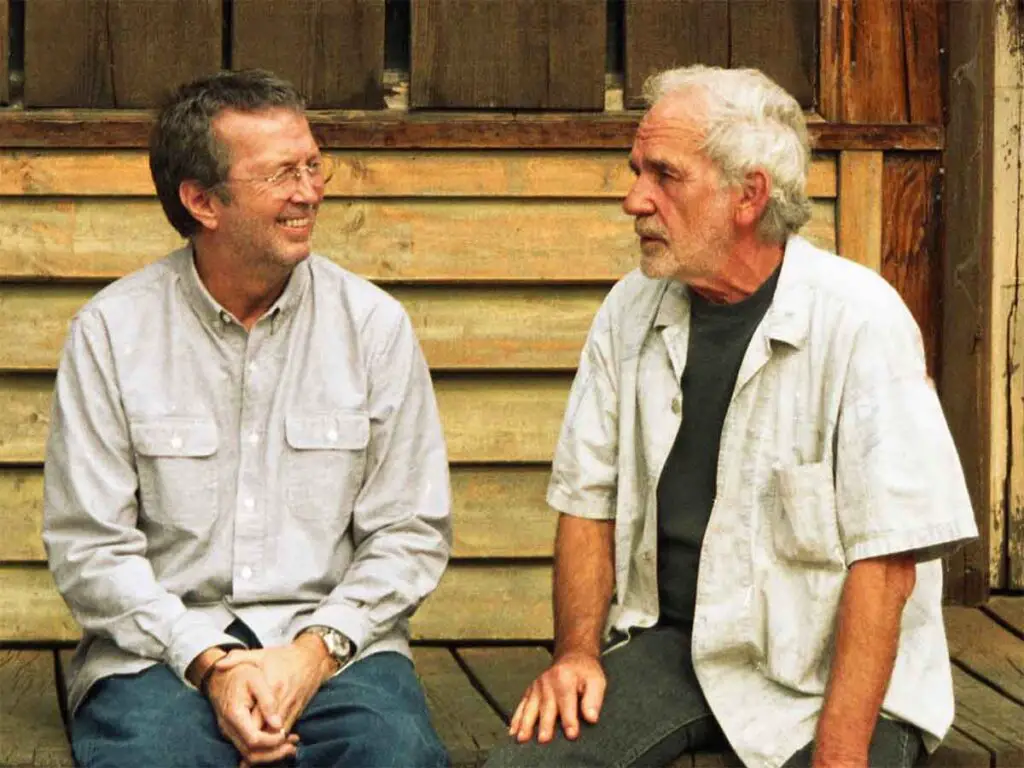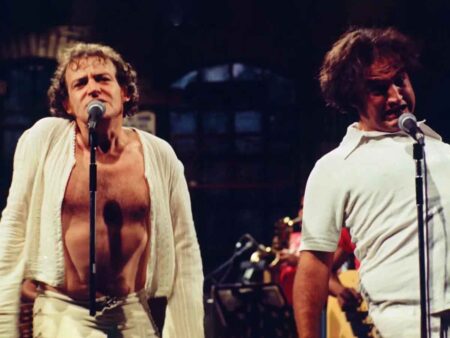When Eric Clapton first heard J.J. Cale, it wasn’t just the groove or the laid-back Tulsa sound that caught his ear. It was the way the music resisted showmanship—restrained, soulful, and deeply personal. For Clapton, burned out on fame and the circus of rock stardom, Cale’s style was more than refreshing. It was a way forward.
The two artists, both guitar giants in their own right, would eventually collaborate on the 2006 Grammy-winning album The Road to Escondido. But their connection ran deeper than studio sessions. It was a friendship grounded in mutual respect, a shared rejection of flash, and a love for music as a craft—not a spectacle.
A Life Outside the Spotlight
Cale, who passed away in 2013 at the age of 74, never chased the spotlight. While his songs “After Midnight” and “Cocaine” became global hits thanks to Clapton’s versions, he preferred to work quietly, mostly from home. According to Clapton, that was entirely intentional.
“I think he found it inconvenient to be pestered by people about what he did for a living,” Clapton told NPR’s All Things Considered. “I think he saw his job, or his vocation as a musician, on the same sort of scale as someone who likes to do landscape gardening, or an architect. He just thought it was something you could develop a skill at, be good at, get some satisfaction.”
Cale’s low-key lifestyle wasn’t an act—it was how he lived, with dogs, tools, and his guitar. He avoided interviews, kept off the radar, and never let fame distract him from the music.
A Beacon for Clapton
For Clapton, Cale’s philosophy came at the right moment in his own turbulent journey. In the 1970s, Clapton had grown weary of being labeled a guitar hero. The relentless expectations, the loudness of heavy metal, and the explosion of virtuosity left him feeling out of place.
“I mean, I wouldn’t change anything,” Clapton said. “For me he was a beacon in a philosophical sense, because I needed to know that there was someone else out there that didn’t want all those trappings.”
He continued: “When I was growing up in the rock and roll school in England, in the ’60s, it just seemed to be a given that everyone was going to end up on TV. The ambition was to have a Top 10 single, to get a recording contract. I felt really alone in the fact that I just wanted to become reasonably good at what I was doing, at playing music. I kind of intuitively knew that that stuff was distracting and counterproductive and mind-distorting.”
That’s what he found in Cale: a fellow traveler, someone who stayed focused on the art while the world chased after everything else.
The Road to Escondido
The two finally collaborated formally in 2006 with The Road to Escondido, a warm, groove-filled record that seamlessly blended blues, country, and Americana. It felt less like a duet and more like two artists breathing in sync. Clapton remembered how Cale, often described as reclusive, actually had a sharp sense of humor and loved being around fellow musicians—just not on red carpets.
The sessions were laid-back, but deeply musical. What Cale taught Clapton in the studio wasn’t technique—it was to trust the feel. Don’t overthink it. Let the moment guide the song.
The Breeze: Saying Thank You
When Cale passed away, Clapton was on a plane to Los Angeles for the funeral. During that 12-hour flight, he began planning a tribute album. The result was The Breeze: An Appreciation of J.J. Cale, featuring a host of Cale’s musical admirers, including Tom Petty, Willie Nelson, Mark Knopfler, John Mayer, and Derek Trucks.
Clapton didn’t want to rehash hits. Instead, he dug deep into Cale’s catalog—unreleased songs, forgotten gems—to show a different side of the songwriter. He felt Cale never got the recognition he deserved in the U.S., even though he was widely admired in Europe.
The album was more than a tribute. It was a message. Clapton said he needed to “say thank you for all the inspiration over the years.”
Legacy in Restraint
J.J. Cale isn’t in the Rock & Roll Hall of Fame, and he may never be. But Clapton believes that’s a loss. He sees Cale as a foundational figure in American music—a quiet architect of the sound many have built careers on.
“He lived in a way that I thought was a good model for someone who wanted to pursue music as a serious vocation, without getting too bogged down in all of the peripheral stuff.”
In the end, Clapton didn’t just admire Cale’s music—he admired the way he carried himself. No theatrics, no ego, just songs that linger long after the final note. That, Clapton seems to say, is what real artistry looks like.




